
Health Trackers
Written by Marybeth Luczak, Executive Editor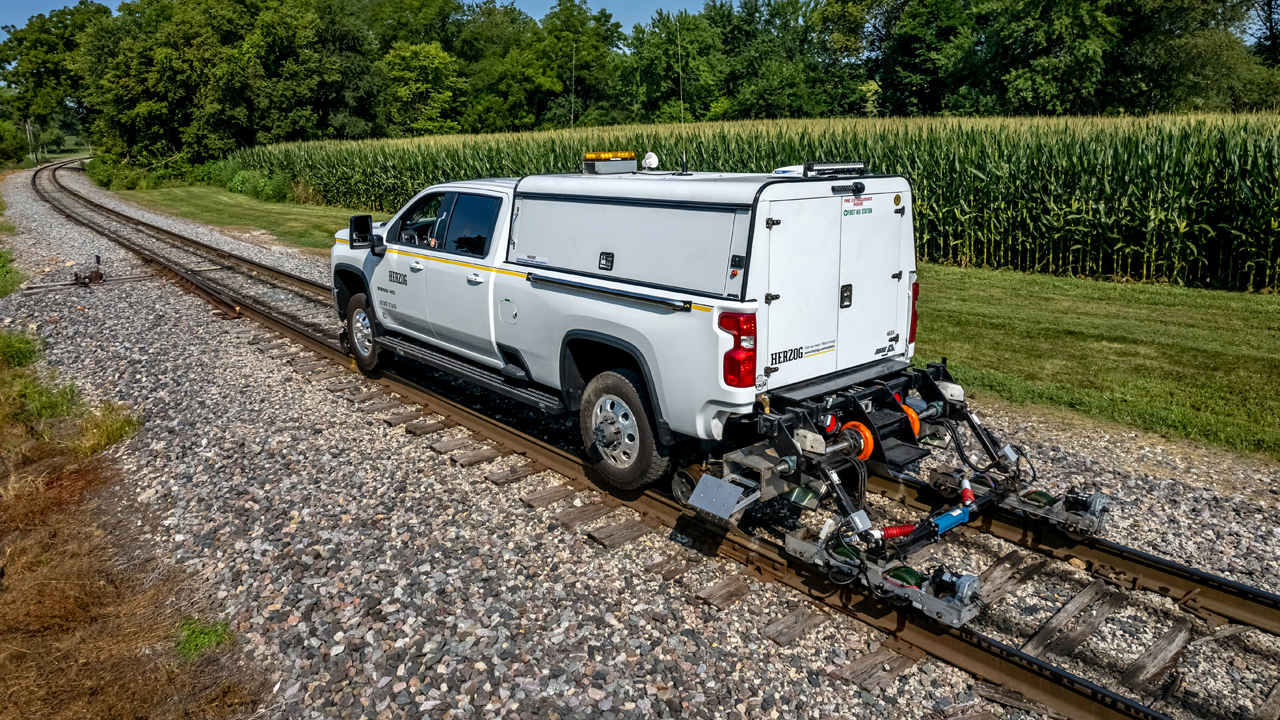
Herzog continues to automate its audit process for rail flaw detection. (Photograph Courtesy of Herzog)
RAILWAY AGE, JUNE 2022 ISSUE: Track geometry and rail flaw detection product overview and market outlook.
To ensure infrastructure can safety withstand today’s traffic demands, suppliers are helping freight and passenger railroads to assess rail alignment and health—and to take action before failures and service disruptions can occur. Following is Railway Age’s roundup of their latest offerings, from equipment to services, plus a look at the research and development under way and potential market changes now that the Infrastructure Investment and Jobs Act has passed.
ENSCO Rail, Inc.
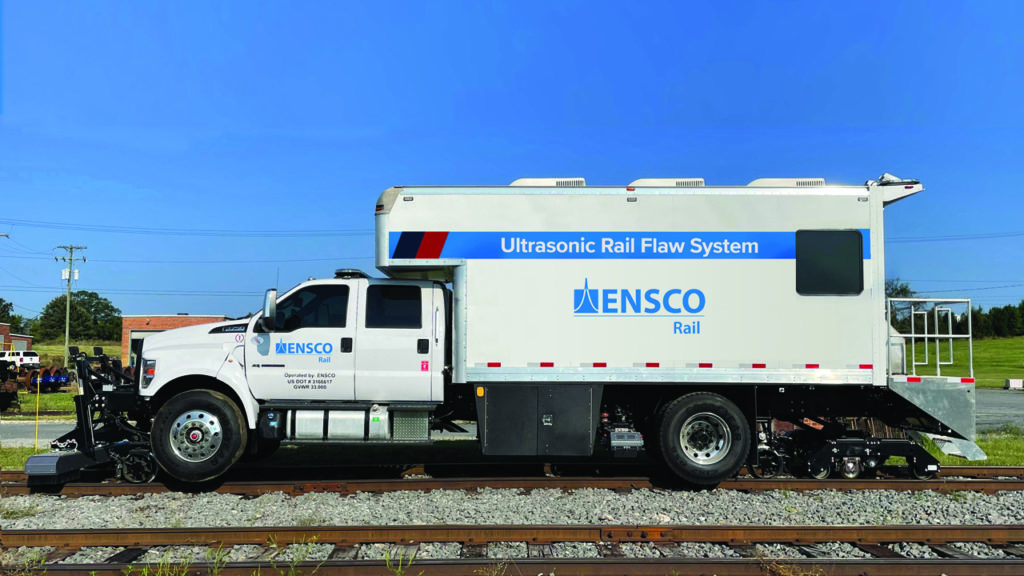
Traditional rail flaw detection methods of stop-and-verify continue to be preferred by many railroads, Division Manager Matthew Dick reports, but as Class I’s introduce more continuous testing, the market is shifting toward ultrasonic technologies that facilitate it. Customers seek further automation, he explains, so they can “achieve more accurate testing cost effectively.”
On the track geometry side, autonomous rail-bound vehicles outnumber manned rail-bound vehicles in North America, Dick adds.
ENSCO recently deployed its first autonomous joint bar imaging systems on two Class I’s. These systems, in combination with autonomous track geometry measurement systems, inspect for defects such as cracked bars.
Dick tells Railway Age that “with infrastructure improvements made from federal funding and the resulting increases in capacity, continued growth of ultrasonic rail flaw testing and autonomous track inspection will need to accompany it,” which will ultimately drive down derailments and service failures.
Herzog
Herzog continues to streamline and automate its audit process for rail flaw detection. Its newest technology, Smartprobe, is designed “to improve the signal-to-noise ratio of received information from internal anomalies and further enhance pattern recognition for its artificial intelligence (AI) engines,” the supplier reports. “The neural network capabilities within Herzog’s continuous testing software expedites flaw detection and allows analysts to concentrate on areas of the highest priority. Herzog’s machine learning algorithms use vast historical data from previous runs as input values to predict, analyze and compare suspect indications on new datasets against historical data. Ultimately, the AI engine reduces human error and lessens the amount of time that verifiers spend inspecting potential flaws in the field.”
In addition to ultrasonic rail testing, light geometry and joint bar detection, Herzog’s freight and transit customers can expand their inspection dataset to collect millions of data points along the entire right-of-way using the supplier’s “advanced LiDAR platform.” The LiDAR applications can provide outputs for ballast profiling, asset identification and clearance analysis during a single survey.
“Our collection platforms are robust, and our machine learning technologies help us to quickly analyze data, identify trends and catch any anomalies so they can be addressed immediately,” Senior Vice President of Quality Assurance and Rail Detection Innovation Troy Elbert reports. “We are able to provide clients with valuable insights from the comprehensive data we provide.”
Holland LP
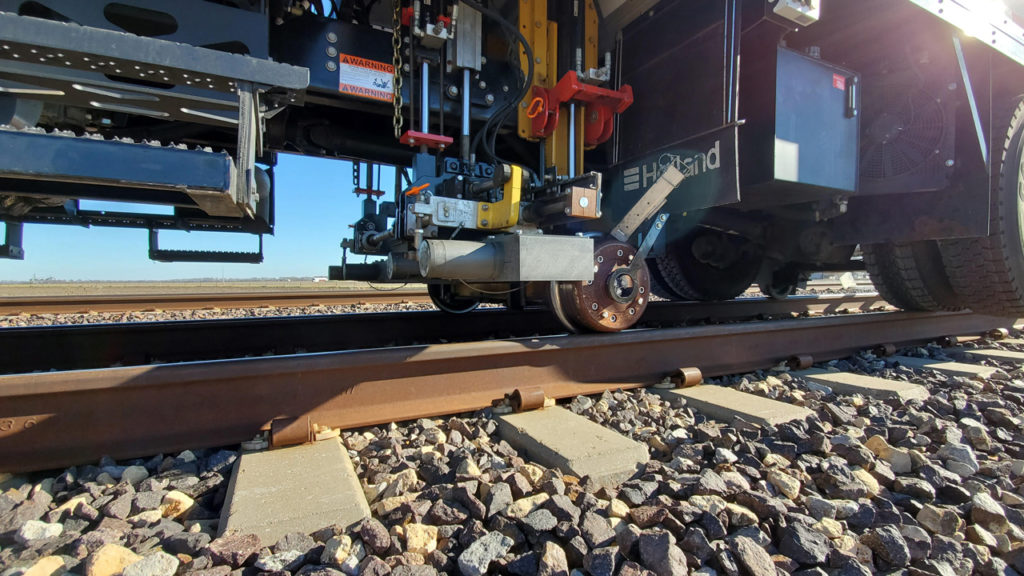
“The track geometry market continues to trend toward increased automation, integration and self-performance,” Russ Newberg, Director of Operations, Rail Measurement Systems and Services, tells Railway Age. “Customers are eager to demonstrate to the Federal Railroad Administration, and the broader rail ecosystem, that track inspection can be done at scale both efficiently and effectively, leveraging large datasets to make informed maintenance and safety decisions in near real time. For self-performance-based solutions, portable inspection systems like our Track Inspector complement traditional TrackSTAR GRMS geometry collection in settings like yards and branch lines.”
Holland is working with a number of Class I, short line and transit customers to determine the appropriate applications for them, depending on operating model, regulatory environment and strategic asset management goals. Not only are customers looking for “increasingly integrated, automated, and economical track inspection and testing technologies,” Newberg says, but also for data management and machine learning tools, like Holland’s “that help distill their exponentially growing datasets into actionable insights while serving as sentinels for potential safety or network fluidity issues.” Also, “improved forecasting tools and software solutions that integrate technologies like LiDAR, network mapping, data alignment, asset identification and management allow railroads to quickly take action around maintenance and future planning for a safer railway,” he says.
Holland’s product team remains committed to delivering a “best-in-class geometry and rail wear measurement system in Argus,” Newberg says, and is now at work on the next generation. Argus 2.0 will offer the latest hardware technologies that will enhance computing capabilities to provide results in real time, as well as seamlessly integrating other inspection technologies and operating autonomously at high speeds, according to Sabri Cakdi, Director of Product Development, Rail Measurement Systems and Services.
Kawasaki Track Technologies
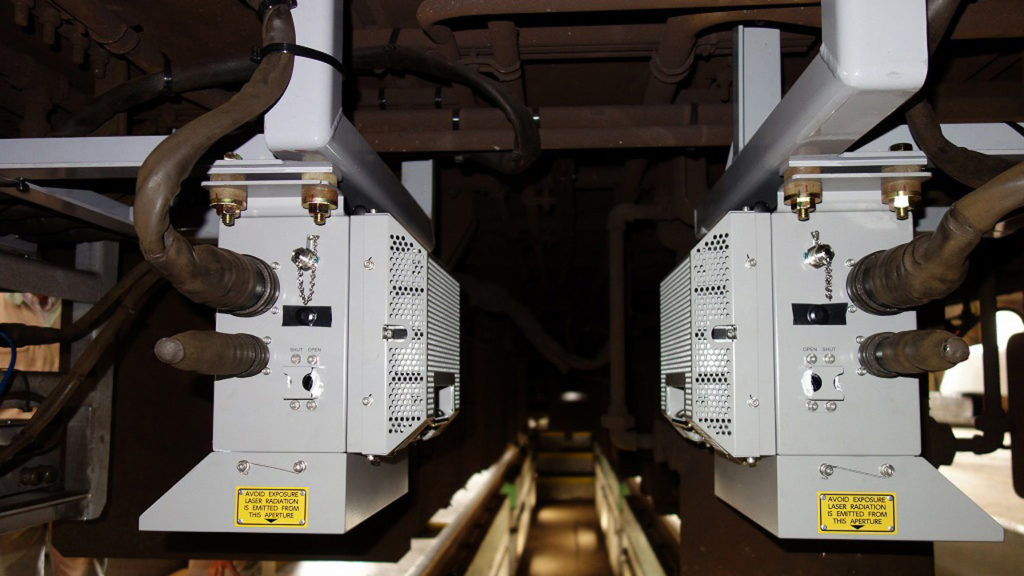
Kawasaki has been providing track-monitoring devices in Japan for more than 25 years. The company recently completed a multi-year pilot of its locomotive-mounted autonomous track geometry monitoring system with a Class I, and in 2021, installed production units.
Customers are focused on two primary areas: automation and prediction, Program Manager Ryoji Negi reports. “By automating inspection activities and providing more predictive data, our customers have the opportunity to reduce the impact of track inspections and maintenance on revenue freight,” he explains. “In addition, by moving toward predictive maintenance, our customers will have the ability to reduce their overall track maintenance spend.”
Negi says the outlook for automated geometry products is promising. Kawasaki’s Class I pilot “has proven that the system is safer and more reliable than manual inspections and much more cost effective per mile compared to manual and boxcar systems,” he points out. “As the Class I waivers are resolved with the FRA, we believe the demand will continue to increase for automated, reliable geometry monitoring systems.”
What’s next for Kawasaki? To provide an automated fastener inspection system. The project’s first phase is slated to begin this summer with the installation of an autonomous data collection system to help develop machine learning algorithms. The company aims to provide a prototype in 2023. On the R&D side, Kawasaki is investing in machine learning and data platforms. The push for automation will require more advanced algorithms, Negi says. The company will also leverage the R&D activities of parent Kawasaki Heavy Industries, Ltd., when applicable, to the North American rail maintenance marketplace.
MERMEC Inc., an Angel Company
“Class I railroad and mass transit customers are investing heavily in maintaining their infrastructure, and looking to companies like us to provide them with the technology that can prevent system failures,” says Dr. Alan E. Calegari, President, CEO Director and Chairman of the Board of MERMEC, which offers a portfolio of track inspection and measuring technologies. He tells Railway Age that customers today are looking to suppliers for:
• Ways to introduce artificial intelligence into the inspection process to help eliminate potential human error.
• Solutions that operate at track speed since congestion reduces work/testing windows.
• More technology to fill the gaps—linked to the need for U/X and supportive secondary technology—due to workforce attrition, especially at the experienced level.
• Diagnostic technologies focusing on special trackwork (particularly switch locations).
• Technologies that can be attached to existing revenue platforms. Interest “has always been there,” Calegari says, “however, lately there is a greater interest in locomotives-mounted solutions.”
• Increased data and system security.
Among the company’s latest offerings are a portable rail-production monitoring unit for steel mills and an automated switch inspection system. MERMEC also recently finished the Diamante 2.0, “a complete data traveling laboratory” for the Freccia Rossa High Speed program in Italy, Calegari says, and is slated to complete this summer a ROGER 800 series diagnostic vehicle for San Francisco Bay Area Rapid Transit District, for example.
On the R&D side, “we are looking right now about 10 years ahead,” says Calegari. “Our normal approach is in five years, the enhancement of current applications, and in the next five years, the replacement of current applications, with consecutive but also continuous improvement on all the functionality that we have currently. … We are also looking at various technologies. MERMEC as a group, we have another division in Europe that is very much involved in aerospace, particularly supporting the space program with the International Space Station. We have a satellite application that we see potentially of great value to enhance the ability to do diagnostic applications for rail as well.” (He acknowledges the complexity of using that technology in tunneling and other challenging landscapes, for example.) Before satellites, Calegari says Columbia, S.C.-based MERMEC is considering drone technology through a partnership with the University of South Carolina. “All of these things are part of our engineering effort so we can understand how we can simplify but yet enhance our precision in terms of detecting deterioration and improving the state of health of the rail network,” he says.
Nordco, a Wabtec Company
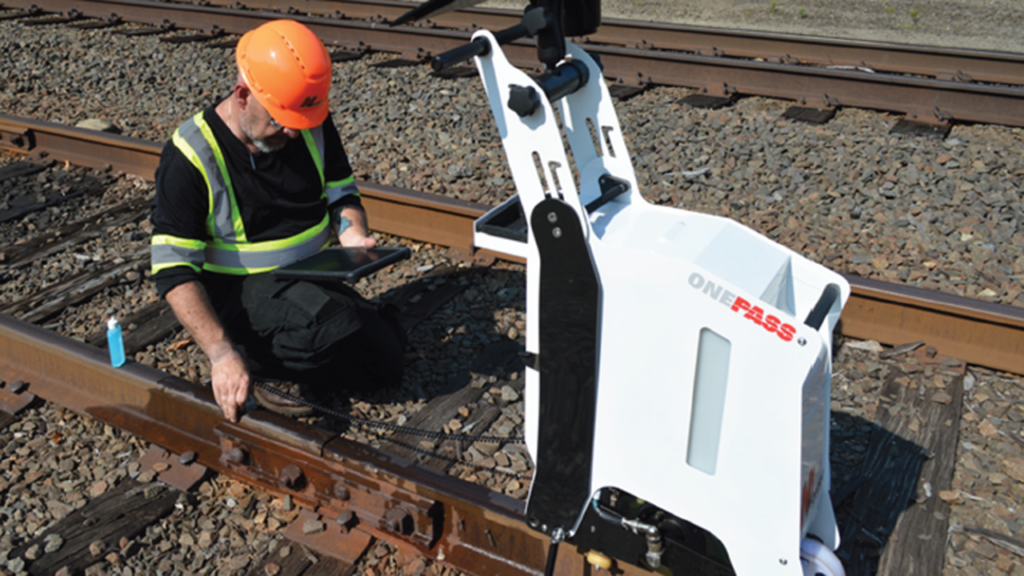
“Class I’s continue to view RFD [rail fault detection] as an important safety aspect in their railroad operations and look to expand and make the inspection processes more efficient,” Vice President Bruce Boczkiewicz reports. They are also “focused on faster testing speeds to take advantage of smaller work windows while looking to add additional inspection services on the same equipment,” he explains. “Reducing cost and manpower are key focus areas.” On the transit side, Nordco customers are looking to purchase their own equipment as an alternative to relying on inspection service providers.
Among the company’s latest offerings are the RB560 system—part of a complete inspection vehicle—and the OnePass walk-behind system. “RB560 continues to be enhanced with expanded connections to third-party operating systems, remote access, ease of maintenance, and auxiliary systems such as paint marking,” Boczkiewicz says. The OnePass system with “continuous software enhancements and defect detection capabilities,” has also been upgraded in terms of weight, ease of use and deployment.
Plasser American Corp. (PAC)
In the U.S., the current administration’s efforts to upgrade infrastructure will have positive impact on railroad industry, PAC tells Railway Age. “The construction of new high-speed railroads both on the East and West Coasts as well as the major expansion and rehabilitation of Amtrak’s network will create a lot of opportunities for companies like PAC, which is in a unique position of having state-of-the-art products both in maintenance-of-way and measuring systems,” the supplier says. “We expect, throughout this year and next, steady growth in the measuring systems market in North America, especially in software and integration … with products focusing on details like the wheel-rail interface. PAC has been providing equivalent conicity calculations to its customers for many years. … We also believe 2022 and 2023 will be the years that both transit authorities and Class I’s start to look more closely into what can be done with their gathered data and how it can be utilized for smart maintenance of the track and cost-saving measures by implementing predictive analytics.”
What’s in the project pipeline? Upgrading track geometry system software and hardware for Class I’s as well as deploying cloud solutions to link their measuring car data with their tampers; modernizing and rebuilding multiple transit geometry cars; and exploring “new system deployment on Class I’s, such as specialized turnout measuring systems and switch tamping assistant systems.”
RailWorks
Customers of RailWorks, which offers track geometry services via its Maintenance of Way division, have been increasing testing frequency to monitor asset conditions, Vice President RT Swindall reports. They also want accurate real-time results. “When our geometry vehicle crosses a curve that’s out of tolerance, for example, they want to know immediately,” he says. “We’re able to stop, verify and make a call.” Swindall adds that RailWorks’ equipment also provides flexibility to take a more “precision” look at particular locations. “The customer can say, ‘Let’s move from Flagstaff, Ariz., over to Billings, Mont., and instead of having to wait three to four days [when testing is tied to a train and the car has to be rerouted], our guys can drive from one location to the next, set on the rail, and test the next section.” The company’s use of a physical contact gauge for measurements is also a benefit.
What’s next? Swindall says that the company is looking into rail flaw detection and eddy current testing.



